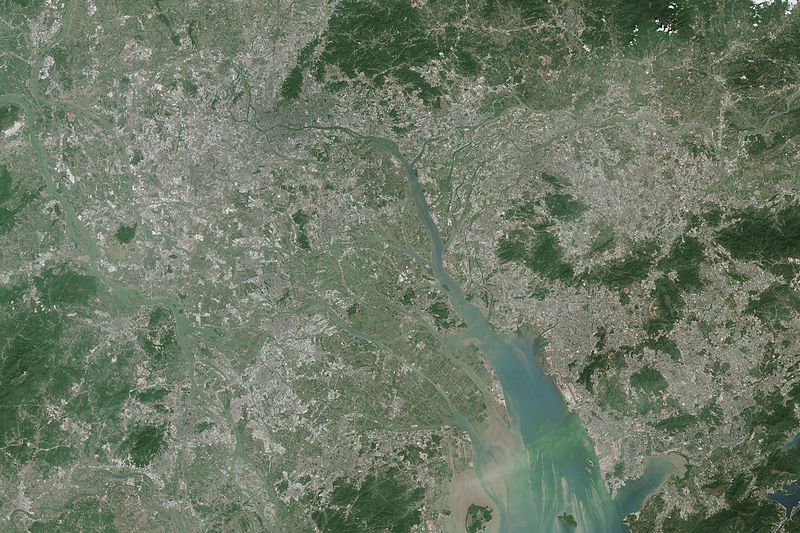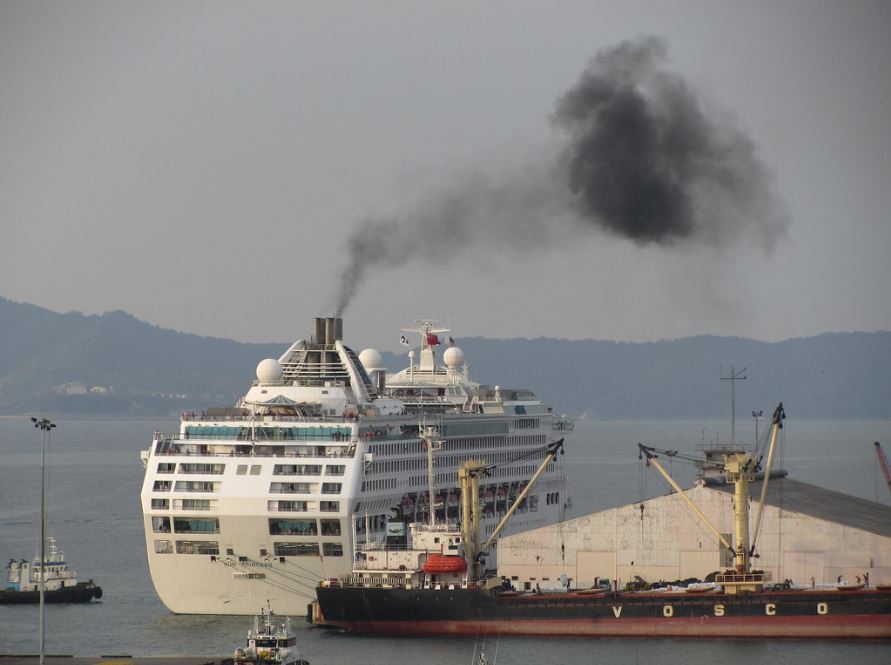26 August 2019
Ship emissions responsible for thousands of premature deaths in China’s Pearl River Delta
Posted by larryohanlon
By Terri Cook
Ship emissions caused more than 1,200 ozone-related and 2,500 particulate-related premature deaths in the Pearl River Delta region in 2015, according to new research in the AGU journal GeoHealth. The new study also predicts that implementing new coastal emission controls could reduce mortality due to fine particulates by 30 percent and ozone by 10 percent by 2030.
During the past few decades, the fertile, low-lying delta in southeastern China where the Pearl River flows into the South China Sea has become the world’s largest and most densely populated urban region. This megalopolis now encompasses nine major cities, including Hong Kong, Shenzhen and Guangzhou, with a combined population of about 65 million and a GDP equivalent to South Korea’s.
A boom in shipping has contributed to the region’s explosive growth. In 2015, the delta’s 11 major ports, which include three of the 10 largest in the world, handled about 39 percent of China’s total exports.

According to the results of a new modeling study, new emission controls on oceangoing vessels could prevent thousands of premature deaths in China’s Pearl River Delta, the most heavily populated region in the world. Credit: NASA Earth Observatory
Although the resulting economic expansion has generated many benefits, the large volume of shipping also has a downside: The emissions associated with oceangoing vessels can degrade the air quality of coastal cities and harm the health of the people living there.
Ship emissions are major sources of fine particulate matter, inhalable soot particles with a diameter less than or equal to 2.5 microns, as well as volatile organic carbons (VOCs), and nitrogen oxides. In the presence of sunlight in Earth’s atmosphere, some nitrogen oxides and VOCs can react together to form ozone. Both ozone and fine particulate matter are pollutants known to adversely affect human health and whose impacts are typically measured in terms of premature deaths.
The study’s authors used the 3-D Weather Research and Forecasting Model coupled with Chemistry to assess the delta’s air quality both with and without ship emissions and then compared the results to determine the concentrations of pollutants that ships contribute to the region.
Next, the researchers used previous studies that analyzed the health outcomes associated with increased exposure to ozone and fine particulates to estimate the impact that ship emissions had on human health in 2015, the last year for which ship and land emission inventories were available. They found ship emissions caused more than 1,200 ozone-related and 2,500 particulate-related premature deaths in the Pearl River Delta region in 2015.
The team then used the same approach to predict the impacts of shipping emissions in the delta in 2030. Taking estimates of future ship fuel consumption and fuel quality into account, the team conducted simulations for several scenarios, including both with and without the implementation of an Emission Control Area (ECA), an internationally designated zone where ships must use low-sulfur fuels and take other actions to minimize their harmful emissions.

Cruise ship exhaust as it prepares to depart. Credit: CC by 2.0 (Jason Thien via flickr)
The results indicate that implementing an ECA would generate substantial health benefits, including 30 percent fewer particulate-related and 10 percent fewer ozone-related premature deaths, in the region.
Collectively, the team’s findings indicate that ship emissions are already impacting human health in the Pearl River Delta and will continue to do so in the near future. Implementing an ECA would substantially improve the air quality and decrease premature deaths in the region, according to the study’s authors.
“Based upon these results, we think it is important for China to consider implementing an ECA,” concluded Chen, a former Emory University graduate student and the lead author of the new study, who is currently a data analyst at the Center on Rural Innovation.
Although a number of recent studies have analyzed the impact of ship emissions in China, the new research appears to be the first that estimates both past and future air quality and health impacts in the Pearl River Delta region, said Eri Saikawa, an environmental science professor at Emory University and a co-author of the new study.
“The results have implications beyond the Pearl River Delta,” she said. “We would expect similar results all along the Chinese coastlines.”
Terri Cook (@GeoTravelTerri) is a freelance science writer.










 GeoSpace is a blog on Earth and space science, managed by AGU’s Public Information staff. The blog features posts by AGU writers and guest contributors on all sorts of relevant science topics, but with a focus on new research and geo and space sciences-related stories that are currently in the news.
GeoSpace is a blog on Earth and space science, managed by AGU’s Public Information staff. The blog features posts by AGU writers and guest contributors on all sorts of relevant science topics, but with a focus on new research and geo and space sciences-related stories that are currently in the news.